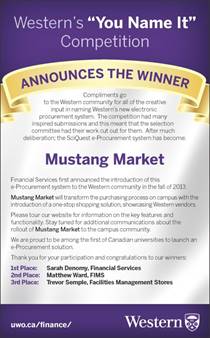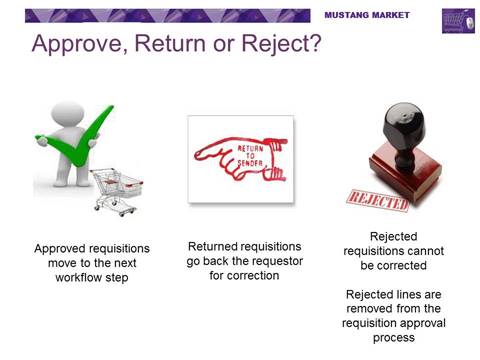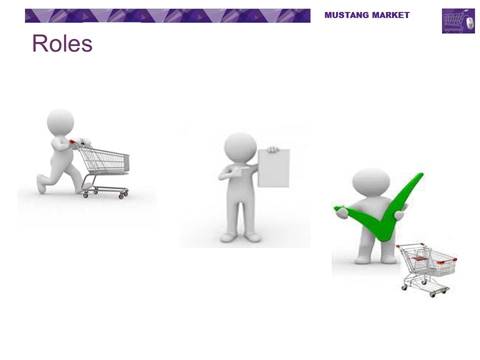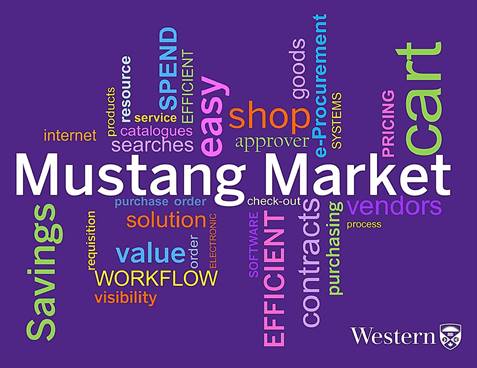Key Takeaways
- Tracking procurement activities across departments is challenging enough; attempting to analyze the process to identify possible savings is even more difficult.
- Having streamlined its procure-to-pay process, Western University realized that it needed a cloud-based solution to build on this success.
- After a thorough vetting process, the university developed Mustang Market, a one-stop e-procurement marketplace that lets users browse vendor catalogues and obtain university-specific pricing on supplies.
- Collaborating with other Ontario universities helped ensure broad regional adoption of the procurement platform in Ontario, while a commitment to on-campus training and outreach ensured its successful adoption in-house.
Elizabeth Krische, Director of Procurement Services, Western University
As director of Procurement Services at Western University, I know first-hand how difficult it can be to track activities across several departments — regardless of a college or university's size — and to analyze processes to identify opportunities for savings.
With close to 2,500 faculty and staff members and more than 31,000 full- and part-time undergraduate and graduate students, Western quickly learned that streamlining our procure-to-pay process was essential to achieving our target efficiency level. So, more than five years ago we began taking the necessary steps to achieve our goal. During that time, we improved our procure-to-pay procedures by enhancing our PeopleSoft tools. However, to further our procurement evolution, we realized we wanted to implement a user-friendly solution.
Seeking a Solution
To ensure universities throughout the area would also have an opportunity to take advantage of e-procurement, Western led a request for proposal (RFP) on behalf of the Ontario University Procurement Management Association (OUPMA) to identify a winning solution. Our main requirements were that the software
- be user-friendly;
- offer an intuitive shopping environment for goods and services;
- address the universities' spend challenges;
- easily support supplier enablement, catalog management, and contract management; and
- automate complex business processes and purchase order placement, tracking, and management.
We drafted the RFP in collaboration with three other Ontario universities. Our goal was to challenge prospective bidders to clearly articulate how their solutions were superior at addressing the issues and risks faced by Ontario universities in their procure-to-pay processes.
After a thorough evaluation of the three proposed solutions and their fit with the vision, business, technology, and customer service requirements of OUPMA, Western chose to partner with SciQuest because of its technology, services, and experience in assisting universities with their procurement systems. Five universities have now joined the OUPMA contract to take advantage of the new e-procurement solution.
Managing the Implementation
SciQuest's use of agile methods complemented Western's project management philosophy. During the project kick-off meeting, SciQuest assisted us in documenting our requirements, because one of the project goals was not only to implement an e-procurement system's functionality but also best practices in procure-to-pay processes. Throughout the project, the teams from Western and SciQuest worked together to ensure the solution configuration met our needs by regularly revisiting the project goals:
- Accessibility: Enhance customer service by adding more self-serve features (such as purchase order and invoice status).
- Controls: Ensure that adequate controls and approval processes are in place.
- Contracts: Negotiate better pricing using tools that ensure the contracted pricing is applied to all Western purchases with increased visibility in our spend for procurement.
- Efficiency: Provide more efficient tools to allow staff and researchers to spend less time on procurement-related activities.
- Savings: Cost savings will go back to the individual research projects and departments at Western.
- Simple: Offer a one-stop shopping experience that is easy to use.


We knew it would be crucial to develop a communications plan that prepared individuals for changes to their current processes and educated users — including researchers, university administrators, budget unit heads, shoppers, requisitioners, and approvers — about the value of e-procurement. To manage this, we brought in two Financial Services team employees as project managers: one focused solely on communications plans and community engagement; the other focused on deadline management and department issues.
The two project managers ensured that the university followed a strict timeline to increase the campus's knowledge about the solution's Western-specific capabilities, train end users on the system's functionality, and address any issues that arose. As a starting point, members of the Procurement and Accounts Payable teams were invited to a "Communication Skills for Change Agents" training course, which focused on change management and helped team members identify where they stood in the change cycle — adopters, resistors, or fence-sitters. From there, Western tapped their resources to support end users by developing manuals, quick reference guides, training sessions, and video snippets. In addition, we offered reluctant end users opportunities to contribute their suggestions through focus groups, revisions to training documents, and one-on-one training sessions. Users also had access to a dedicated Financial Services hotline and website where they could find answers to their questions about the project or its status. Once the training and initial marketing were complete, the team worked to promote ownership by issuing a community-wide "name the system" competition (see figure 1).
Introducing Mustang Market

The new solution, Mustang Market, was soft-launched in June and completely replaced PeopleSoft requisitioning in December 2014. Mustang Market is a platform that lets faculty and staff purchase goods and services from vendors that have negotiated specific discounts for Western. (Figure 2 shows the requisitions process in brief, as presented in a training slide.)

Figure 2. Mustang Market training on requisitions
To use the system, users first create profiles with specific speed codes, shipping addresses, and preferences — all of which can be automatically used at the point of purchase. This is especially helpful for users reordering supplies they routinely purchase. User profiles are also used to assign specific roles to help manage workflow (figure 3):
- Shopper: Users who can place items in a cart, but cannot create a requisition for the items.
- Requisitioner: A person who can shop and who generates a requisition by submitting the shopping cart for approval
- Approver: Someone with budgetary authority who approves and submits requisitions.

Figure 3. Training slide showing roles in Mustang Market
The one-stop e-procurement marketplace lets users browse more than 46 specific vendor catalogues or visit punch-out sites — that is, re-directed sites with Western-specific pricing — to purchase supplies (similar to an Amazon shopping experience).
Additionally, Mustang Market boasts several tools to help further streamline the shopping experience, allowing users to:
- Consolidate orders by sharing a single cart across a particular department
- Copy a cart to reduce the need to look up items again
- Add commonly purchased items to a "Favourites" folder to speed up the purchasing process
All 1,200 employees who have been trained thus far can access Mustang Market on their desktop, laptop, or tablet. If users encounter any issues, they're free to reach out to Western's e-procurement manager, who assists administrators, facilitates training across the campus, identifies vendors for enablement, and tests for glitches and workflow issues.
Examining Results
Although the marketplace is still in its infancy, we anticipate significant savings resulting from its implementation (see table 1). From a user perspective, departments can spend less time on procurement-related activities and more time on projects that have a greater impact on the university. As noted by Rodney DeKoter, a researcher and faculty member in the Department of Microbiology and Immunology at the Schulich School of Medicine:
"I'm finding that using Mustang Market, I can place orders for my research laboratory in less than half the time that I spent using the old system. I especially like two features: first, not needing a large number of individual usernames and passwords for vendor sites; and second, being able to place orders from multiple vendors, and then check out once using a single speed code."
Table 1. Existing practices vs. predicted Mustang Market e-procurement results
|
Existing Solution |
Mustang Market |
|---|---|
|
E-requisitions (more than 26,000 annually) |
Anticipate more purchase orders (150,000–200,000 annually) |
|
Systems contracts (170,000 transactions) |
Anticipated reduction of 75–90 percent |
|
Check requisitions |
One-time payments |
|
Procurement cards |
Anticipate reductions of 10–15 percent |
Financially, the system lets us ensure that the university's departments are purchasing from vendors we have negotiated pricing with, rather than buying supplies at a higher cost. In addition, Mustang Market's powerful reporting has helped Western recover $70,000 from compliance reporting alone, which allowed us to verify that the prices charged equaled the prices contracted. (Our previous system did not have the tools to monitor or verify compliance.) The marketplace is centrally funded by the university, and savings go right back to the departments. Early indications show that our anticipated savings will be exceeded in the platform's first year of operation, which will better Western's goal: an aggressive eight percent savings over five years as compared to addressable spend, designed to offset some of the reductions in public funding of the university.
User reaction so far appears in the Wordle shown in figure 4.

Figure 4. Wordle for Mustang Market
Next Steps
Motivated by the possibility of significant savings in both time and resources, we are continuing to identify opportunities to further enhance our procure-to-pay processes.
Specifically, Western has four near-term plans:
- Fully utilize SciQuest's Contract Manager functionality to further control spending, mitigate risk, and enforce compliance
- Implement portal invoicing to let medium-sized vendors control the timing of their invoicing and reduce work in Accounts Payable
- Streamline Western inventory-management processes by incorporating requisition import and invoice import functionalities
- Identify vendor-enablement opportunities, potentially by including internal departments as vendors and P-card vendor rationalization
Each university participating in the OUPMA contract has its own business plan and goals. Western University has begun to see results from our original goals, and we anticipate further savings as we implement our four near-term plans.
© 2015 Elizabeth Krische. The text of this EDUCAUSE Review online article is licensed under the Creative Commons Attribution-NonCommercial-NoDerivs 4.0 license.
